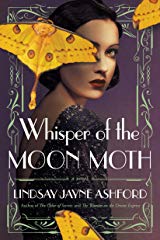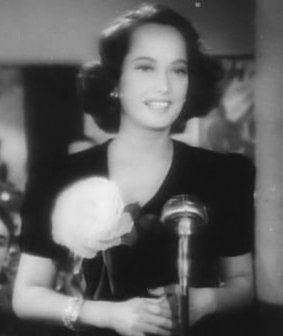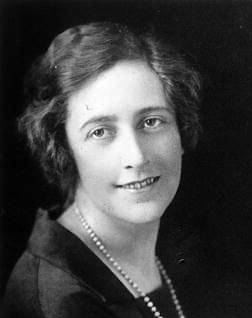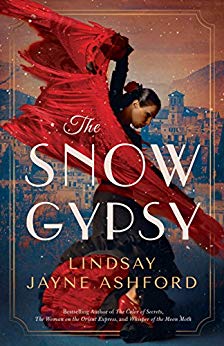
I always associate summer with time for leisure reading, whether it’s a day at the beach, a Saturday afternoon in a hammock under a shady tree, or on an airplane. [Sidebar: I do hope these young women remembered to Slip-Slop-Slap, as well as Wrap their eyes in sun glasses. But I digress.]
Today’s blog begins my occasional summer reading series. I feature books that held my attention and introduced me to something different, whether from the story itself, the subject matter, the location, or just good writing. Our reading adventure begins with three novels by Lindsay Jayne Ashford.
Ashford was the first woman to graduate from Queen’s College, Cambridge. She took her degree in criminology before turning to journalism. She began her writing career with the Megan Rhys Crime Novels before turning her attention to historical fiction based on real women.
WHISPER OF THE MOON MOTH

I selected Whisper of the Moon Moth (2017), based on the life of actress Merle Oberon, because it opens in 1931 Calcutta. Ashford deftly creates a believable atmosphere as she opens her story about Estelle Merle Thompson, a young Eurasian girl who loves movies, amateur dramatics, and nightclubs where she gains entry passing as white. One night she meets one-time actor Ben Finney who takes her along on a very interesting safari. As he says farewell, Finney gives Estelle the name of a producer in London.

Estelle discovers the London of her dreams is not the one she’s living in. She takes a job as a club hostess, takes a screen test, and eventually comes to the notice of producer/director Alexander Korda who mentors Estelle’s film career, beginning with her name change to Merle Oberon, and a new identity unconnected to India.
Whisper of the Moon Moth is an engaging story of secrets and self-termination.
THE WOMAN ON THE ORIENT EXPRESS

I was a bit leery about The Woman on the Orient Express (2016). The title seemed too contrived in its association. The words woman and Orient Express can only lead to Agatha Christie. And, indeed, the historical novel is based on an episode in Christie’s life. In the autumn of 1928, after her divorce became final, Christie boarded the iconic train, and met Katherine Keeling, later Kathrine Woolley, who invited Christie to the archeological dig at Ur in Mesopotamia. Both women are running away from an unpleasant past featuring a failed marriage. Both women have secrets.

Once again, Ashford deftly draws her characters and locations. Agatha Christie is known for her mystery novels. Christie drew on Katherine Woolley as the muder victim in Murder in Mesopotamia. But Woolley was more than a character inspiration. She illustrated the objects catalog for the Ur excavations and assisted in the reconstruction of objects recovered from the site.
I liked The Woman on the Orient Express more than I thought I would, both for revealing more about Agatha Christie’s early life, and introducing me to Katherine Woolley.
THE SNOW GYPSY

Having enjoyed two of Ashford’s books, I picked up her most recent book, The Snow Gypsy (2019). Rose Daniel, the lead character, is based on herbalist and author Juliette de Baïracli Levi who pioneered holistic veterinary medicine, doing much of her research among peasants in Spain.
The story focuses on Rose Daniel, a British veterinarian, in post World War II Spain. Before the war her brother went to Spain to fight in the Spanish Civil War. He never returned. Rose has his letters. There was a pregnant girlfriend. A village.
The secondary character is Lola Aragan. During the war, her family was massacred. She survived, along with a newborn child she rescued. Lola is a flamenco dancer.
Rose has a fling with Lola’s brother, who turns out to be married. She has a deeper relationship with a man who turns out not to be what he appears.
Though Rose strikes out on relationships, she does find out what happened to her brother, and the book finally ends.
If you’re looking for an engaging read about strong women in the early twentieth century, I can recommend both Whisper of the Moon Moth and The Woman on the Orient Express.
???
Illustrations:
La plage aux dunes de Dovela [the beach at the dunes of Dovela] by Bruneau Pierre
Merle Oberon from Stage Door Canteen, 1943
Agatha Christie 1925

Sandra Wagner-Wright holds the doctoral degree in history and taught women’s and global history at the University of Hawai`i. Sandra travels for her research, most recently to Salem, Massachusetts, the setting of her new Salem Stories series. She also enjoys traveling for new experiences. Recent trips include Antarctica and a river cruise on the Rhine from Amsterdam to Basel.
Sandra particularly likes writing about strong women who make a difference. She lives in Hilo, Hawai`i with her family and writes a blog relating to history, travel, and the idiosyncrasies of life.

